Potsdam – Glienicke Bridge (Glienicker Brücke)
The Glienicker Bridge is situated on the edge of Berlin. It spans the river “Havel” to connect the cities of Potsdam and Berlin. During the Cold War, the Glienicker Bridge was one of the few places in the world where the Soviet Union and the Western powers stood directly opposite each other. The bridge lies at an isolated point where US-occupied West-Berlin met the Soviet-occupied Potsdam (East Germany).
The Glienicke Palace (Schloss Glienicke) was designed by Karl Friedrich Schinkel for Prince Carl of Prussia in 1826. The two golden lions in the front of the building are versions of the Medici lions from the Villa Medici. The palace and park are UNESCO World Heritage sites as part of the Palaces and Parks of Potsdam and Berlin since 1990.
Berlin
Berlin is with a population of 3.45 million people the largest city of Germany and is the residence for over 190 nations. The city is the home of renowned universities and research institutes. Furthermore, Berlin shelters great culture, like museums, orchestra and sporting events. The city is famous for the diverse architecture, nightlife and contemporary arts. Its unique and urban settings,plus historical legacy have made it a popular location for international film productions.
Need a bike?
The bicycle sharing system makes numbers of bicycles available as a mobility service in different german cities.
Berlin – Potsdamer Platz
The Potsdamer Platz is a public square and traffic intersection in the centre of Berlin, Germany and the history can be tracked back to the year 1685.
In 1924 one of the first traffic lights in Continental Europe were built at Potsdamer Platz in an attempt to control the sheer volume of traffic passing through. More than 100.000 people and more than 60.000 cars, horse-drawn vehicles, handcarts and bycicles passed the place daily.
During World War II almost all of the buildings around Potsdamer Platz were turned to rubble by air raids and heavy artillery bombardment, but commercial life reappeared in the ruins around Potsdamer Platz within just a few weeks of war’s end.
1961, the construction of the Berliner Wall found the Potsdamer Platz physically divided in two peaces and became totally desolate. Only two buildings in the immediate vicinity of Potsdamer Platz still stood in the east part of Berlin. Below ground, the S-Bahn line remained open, without stopping at Potsdamer Platz. Therefore, the trains briefly passed through East German territory en route from one part of West Berlin to another and the S-Bahn station became the most infamous of several Geisterbahnhöfe (ghost stations).
After the opening of the Berliner Wall in 1989, Potsdamer Platz was one of the first places to cross the border between East and West Berlin. Nowadays, the square became the focus of attention again and became the key area where the city had an opportunity to express itself.
